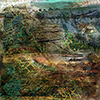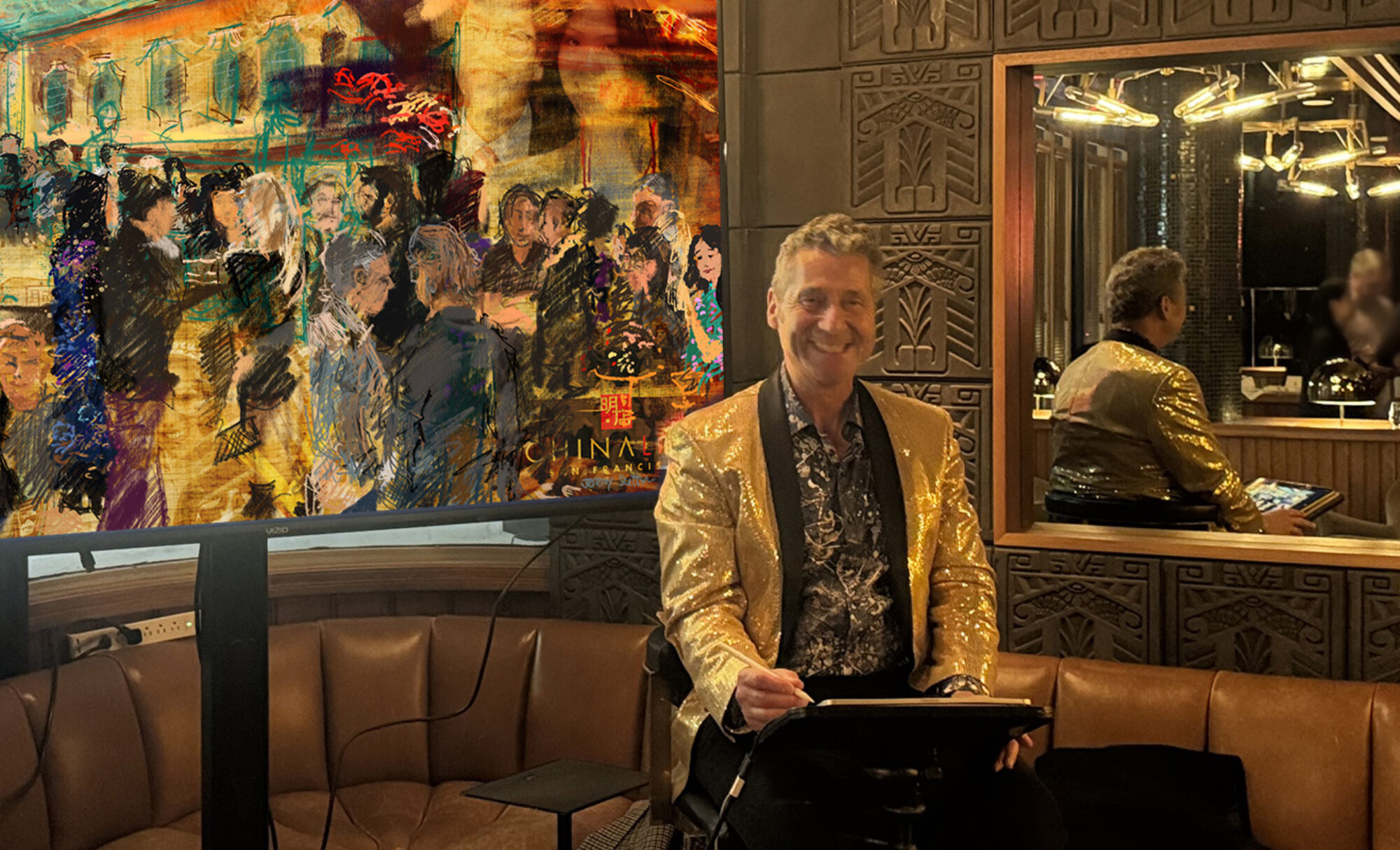
Humans & Machines, 2014, 60″ x 60″
Océ VariaDot UV inkjet print on .125″ 6061 Aluminum plate
with random orbit finish and UV protective matte clear coat finish
Second of eight artworks that tell the story of Silicon Valley,
installed at the San Jose Marriott, Ballroom Pre-function Area (Mezzanine Level)
Humans & Machines reflects on the long history of humans and their invention of and interaction with machines that ultimately led to the birth of what we know as Silicon Valley. This artwork includes symbols of three parallel currents that underly the development of Silicon Valley:
(1) the invention of computing machines and components like the transistor,
(2) the invention of novel ways to interact with machines as represented by the patent application of the first mouse, and
(3) the application of physics ideas, engineering skills and business acumen to producing state-of-the-art technological devices.

One of the earliest devices to come out of Silicon Valley was the klystron, a specialized linear-beam vacuum tube used as an amplifier for high radio frequencies, from UHF up into the microwave range. It proved important for use in radar technology during World war II. It is represented in this artwork by the 1937 klystron patent application by Stanford University electrical engineers and brothers Russell and Sigurd Varian, who subsequently co-founded, with William Webster Hansen and Edward Ginzton, Varian Associates, one of the first high-tech companies in Silicon Valley.
The concept of computing machines have been around for almost 150 years, since computer pioneer Charles Babbage (1791-1871) designed the first automatic computing engines. Though they were never built in his life time due to limitations on engineering precision, they set the foundation the computer revolution that ultimately fueled Silicon Valley. The background texture of this artwork shows the recreated Babbage Engine that is on display at the Computer History Museum in Mountain View, a great place to visit if you’re interested in learning more about the history of computing and wish to see the recreated Babbage Engine in action.
From Babbage’s conception of automated computing engines came, ultimately, integrated circuits and devices such as transistors. After the Second World War William Shockley, co-inventor of the transistor, was persuaded to come from Bell Labs on the East Coast to Stanford University by Stanford Dean of the School of Engineering, Professor Frederick Terman. Shockley set up Shockley Semiconductor Laboratory from which eight employees left in 1957 to found Fairchild Semiconductor in San Jose, California (a division of Fairchild Camera and Instrument initially funded by Sherman Fairchild), where the first commercially practical silicon-based integrated circuit was invented by Robert Noyce. The first Fairchild Semiconductor transistor, shown in this artwork, represents a seminal moment in the growth and development of Silicon Valley as a center of innovation and excellence in the field of computing.
As computing machines became more compact and more powerful the prospect emerged of personal computing machines. One of the researchers who became interested in ways that the ever-evolving computers could augment human intellect was Douglas Engelbart at the Stanford Research Institute (now SRI International). He wanted to make the physical interaction between human and machine more intuitive and natural. With this in mind he invented his first ‘mouse’ prototype in the 1960s with the assistance of his lead engineer Bill English. They called the device the ‘mouse’ since their early models with a cord attached to the rear part of the device looked like the common mouse. You can see Engelbart’s sketch from his first mouse patent application (1970) in this artwork, symbolic of the development of human interfaces for interacting with and controlling computational machines which have spanned Babbage dials, keyboard, mouse, pen tablet, touch screen and gesture.
The Silicon Valley Series
 |
 |
 |
 |
|||
 |
 |
 |
 |
|||

